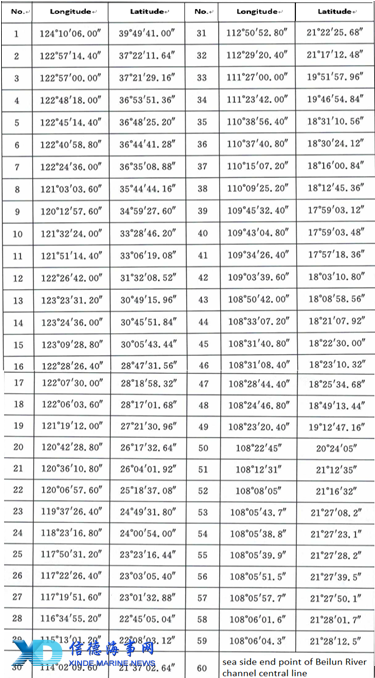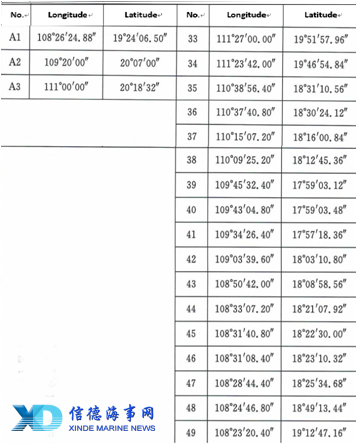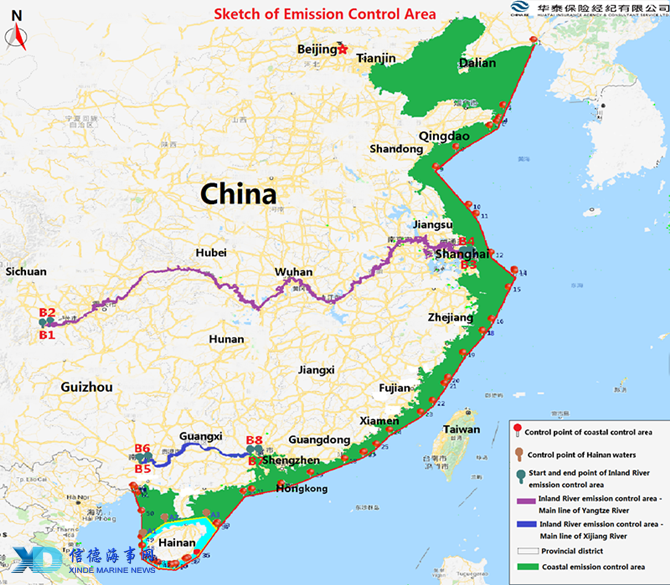

| Inner River Control Areas | Boundary | Point Name | Detail of Point | No. | Longitude | Latitude |
| Yangtzi River main line | Starting Point | Shuifu, Yunnan | Xiangjiaba Bridge | B1 | 104。24'30. 60" | 28。38'22. 38" |
| B2 | 104。24'35. 94" | 28。38'27. 84" | ||||
| Ending Point | Liuhekou, Jiangsu | Line from Liuheiwu located in downsteam of Liuhekou to Shixingan located in downstream of Shiqiao River at Chongming Island | B3 | 121。18'54. 00" | 31。30'52. 00" | |
| B4 | 121。22'30. 00" | 31。37'34. 00" | ||||
| Xijiang River main line | Starting Point | Nanning, Guangxi | Minsheng Terminal in Nanning | B5 | 108。18'19. 77" | 22。48'48. 60" |
| B6 | 108。18'26. 72" | 22。48'39. 76" | ||||
| Ending Point | Zhaoqing, Guangdong | Connection line between Jinlixia tiexian corner in Xijiang river and top of Wudinggang Chung Hau | B7 | 112。48'30. 00" | 23。08'45. 00" | |
| B8 | 112。47'19. 00" |
23。08'01. 00" |


Please Contact Us at: